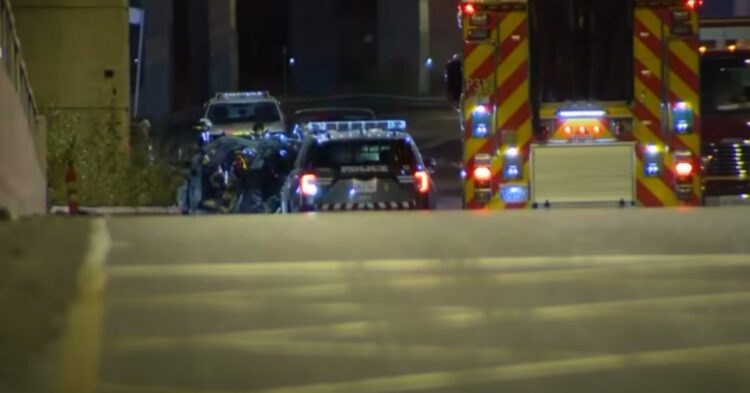The so-called “safest car in the world” turned out to be a death trap for four friends their Tesla crashed into a guardrail. The accident claimed the lives of Jay Sisodiya, Digvijay Patel, Neelraj Gohil, and his sister Ketaba Gohil of Toronto, Ontario on October 24th. Only one survivor, 25, came out of the fatal ordeal after a serious struggle with opening the doors.
What happened?

It is believed that the driver lost control of the car’s steering wheel and crashed into a guardrail. The Tesla then burst into flames, with those inside struggling to get out until it was too late. The driver and the passengers’ ages ranged between 26 and 32.
One person survived

The survivor, a 25-year-old woman, was saved by Canada Post employee Rick Harper. He smashed a window to help the woman exit the vehicle. Harper told the Toronto Star, recalling the tragic incident: “You couldn’t open the doors. I would assume the young lady would have tried to open the door from the inside because she was pretty desperate to get out.” Harper was unaware of the others’ presence due to the smoke.
Why the survivor struggled to get out

Harper believed that the survivor tried to get out but the doors wouldn’t let her, as they work electronically. He tried the door first but it wouldn’t work, so he had to break the window. “I don’t know if that was the battery or what. But she couldn’t get out,” he added.
The electric car’s door mechanism

Randy Schmitz, a captain with the Calgary Fire Department and chairman of the Alberta Vehicle Extrication Association, explained how electronic vehicles such as Tesla are powered by batteries, including the doors. The doors open through electrical power, so no electricity means inoperable doors.
The fire is linked to the car’s battery

Deputy Fire Chief Jim Jessop said, as per the CBC report: “Certainly the intensity of the fire is directly linked to the battery cells in the Tesla.” It is still unclear what caused the collision, but what is certain is that the battery was the main culprit for the fire.
Reports of being the “safest in the world”

Part of a safety report issued by Tesla read that some of its models “have achieved among the lowest overall probability of injury of any vehicles ever tested by the U.S. government’s New Car Assessment Program.” They contributed part of that to their batteries.
The “exceptional” battery pack

The report continued, stating that, “Much of this has to do with the rigid, fortified structure of the battery pack that is mounted to the car’s floor, which provides a vehicle with exceptional strength, large crumple zones, and a uniquely low center of gravity. Because of their strength, Tesla’s battery packs rarely incur serious damage in accidents.”
What should have happened

The same report stated that “in the extremely unlikely event that a fire occurs, the state-of-the-art design of our battery packs ensures that its safety system works as intended and isolates a fire to select areas within the battery while simultaneously venting heat away from the passenger cabin and the vehicle.”
Electric fires are more of a hassle

Unlike fuel-powered fires, electric fires require more water to be extinguished. Additionally, battery disposal after the fire is a complex procedure. Batteries from the scene were removed into a dumpster and were covered in sand. This procedure prevents the risk of the battery catching fire again due to a process known as thermal runaway.
The investigation is still ongoing

The circumstances surrounding the crash and what caused the fire are still under investigation. Authorities urge witnesses or anyone with a dashcam video of the collision to contact Traffic Services. Jessop said that he doesn’t want to comment or suggest what might have happened until the investigation is complete.
















































